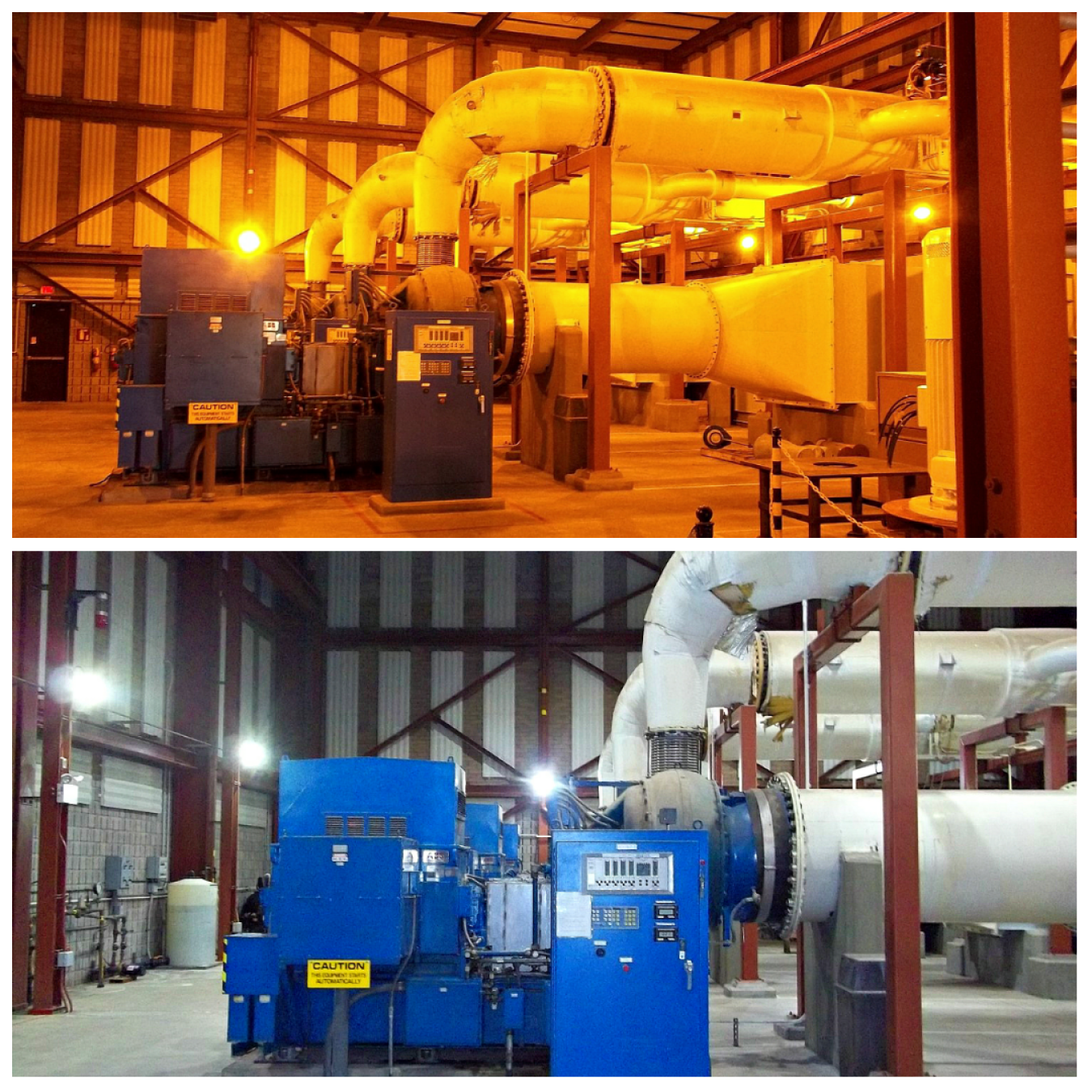Funding support from the Energy Department's State Energy Program is being used by some states to retrofit water treatment facilities and wastewater systems to use less energy because these facilities can be responsible for as much as 35% of municipal ...
Office of Critical Minerals and Energy Innovation
December 1, 2016
Thanks to a 2012 State Energy Program Competitive Award, three Arizona wastewater treatment facilities underwent partial energy upgrades. A facility in Phoenix, pictured here in before-and-after shots, undertook an LED retrofit. The facility is already saving energy and money.
Energy and water are closely intertwined in the U.S. economy; all phases of energy production require water, and water extraction, distribution, and treatment requires energy. The Energy Department has studied this water-energy nexus and is supporting solutions. One critical aspect of this issue is wastewater; according to the American Council for an Energy-Efficient Economy, water supply and wastewater treatment systems account for approximately 35% of municipal energy use. The Energy Department is supporting solutions through its State Energy Program (SEP) by providing funding for states to practice energy conservation at wastewater treatment facilities.
In 2012, Arizona was competitively selected to further its goal of reducing energy consumption at the state’s wastewater facilities by 22% by 2020 from a 2010 baseline.
Arizona utilized the Environmental Protection Agency’s Portfolio Manager to benchmark energy use, analyze building energy performance, and prioritize areas for energy-efficient retrofits at 76 facilities in 54 cities.
Three facilities underwent partial upgrades that achieved 2% energy savings and 2.4% cost savings in 2015. The retrofits included LED lighting installation, chiller replacement, and fan coil unit replacement. In total, they saved about 800,000 kWh/year and $67,000. These three facilities, and five more, will complete retrofits by the end of 2017, and in total this work is projected to achieve 9% energy savings, and reduce approximately 5 million pounds of carbon dioxide emissions annually.
These Arizona projects build on other Energy Department work supporting retrofits at wastewater treatment facilities, such as the Better Buildings Wastewater Infrastructure Accelerator, a three-year initiative for state, local, and regional partners to engage with water resource recovery facilities in their jurisdictions to advance sustainable infrastructure. Currently, 26 partners in 17 states are enhancing energy efficiency and resource recovery at more than 90 wastewater treatment facilities nationwide.
Thanks to these and similar efforts, a nationwide transition in the wastewater treatment industry is underway. Treatment facilities are increasingly known as water resource recovery facilities, as newer facilities emphasize the recovery of resources such as water, energy, and nutrients.
The Energy Department is committed to working closely with these state and local partners to catalyze continued growth in this area to help build a world-class, sustainable water infrastructure.
The Energy Department’s State Energy Program provides funding and technical assistance to energy offices in states and U.S. territories to advance local clean energy priorities while contributing to national energy goals. Learn how the State Energy Program is making a difference in other states.


